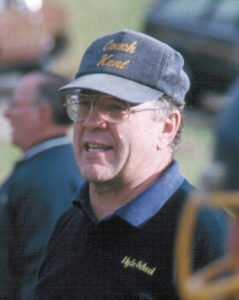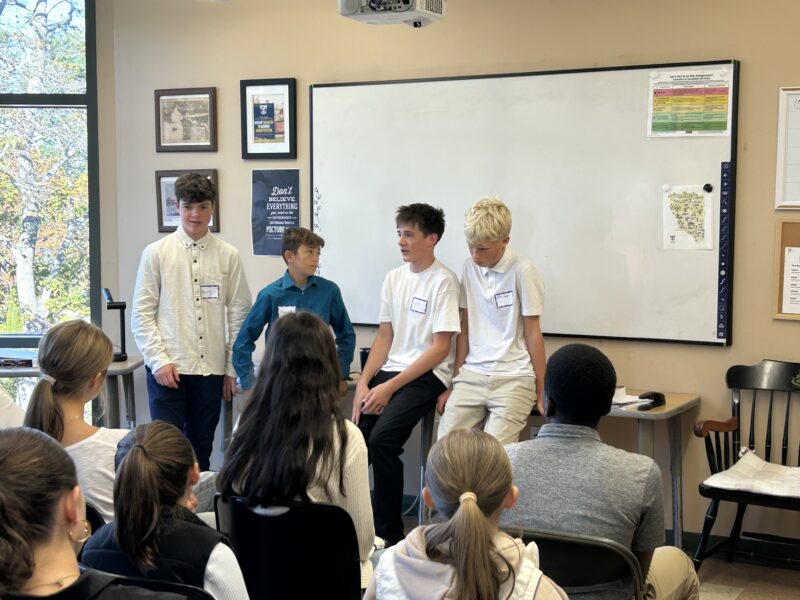This week, Stefan Jensen, our athletic director, asked me to guest teach his elective course on Sports Management. My first reaction: I didn’t know we even offered such a class.
My second reaction: “What do you want me to do?”
Stefan responded, “Oh, just share your best coaching tips.
My third reaction: Hmmm…
My fourth reaction: Here are 10 Tips from the cobwebs of my memory.
1. “Hard Work Beats Talent When Talent Doesn’t Work Hard” – I first saw this on the gym wall at Hyde-Bronx. Speaks for itself.
2. Capabilities trump Strategy – Don’t hold your strategic biases to be sacrosanct. Do build your strategies around your players’ capabilities. One example: do not expect kids with high school skills to execute a college offense. Another: when you revere man-to-man defense but you have a slow team with little depth, put that stubborn pride on the back-burner and teach some zone.

3. Baby a Loser & Beat on a Winner – I learned this from Hyde coaching legend Gary Kent, RIP. Once when he observed me railing on an under-performing team, he pulled me aside and calmly offered, “Baby a loser & beat on a winner.” Sensing my confused look, he continued, “When your team is losing, praise their efforts and tell them you believe in them, assuring them that the next win is just around the corner. When they’re winning, tell them they’re slacking off, that they’ve been playing cream puffs, and they’re certain to get smoked by our next opponent.” I tried it. It worked.
4. “What’s your 1 Thing?” The One Thing I will do each day, not try to do… Rather than settle for vague commitments to improve or try harder, establish painfully concrete, measurable goals. Stealing the concept from my early-80s days in the life insurance business, I adapted this idea over to my women’s soccer team over 30 years ago. To a girl who tended to miss the net, I might say, “Twenty shots on net before every practice, that’s your One Thing.” Another player might be expected to do fifteen head balls before practice. Another might do a dozen corner kicks. The idea is simple: trying is lying… “Just Do It.” So, what’s your one thing?
5. Small-Sided Games have been a mainstay approach to coaching lacrosse for a while and the idea is spreading to other sports. The old way to coach: Have the starters execute a new play in practice with the majority of the team standing around and watching. The new way: Have several small groupings of players executing the play all at once. Kids don’t learn much by watching.
6. The Hoover Award – Former Hyde lacrosse coach Jesse Sataloff had GBWG on the backs of his team’s practice jerseys. It stands for “Ground Balls Win Games.”
When I coached lacrosse, the only award we gave was The Hoover Award, given annually to the player who “vacuumed” up the most ground balls. As you can see from the pic, the trophy ain’t much to look at, but the recipient had royalty status on our team. The cool thing about the Hoover is that any player can win it. The problem with rewarding the highest scorer is that the distinction will always go to an offensive player. So, if you’re into awards, isolate attributes and contributions attainable by anyone.
7. Manage Goals & Expectations – In my early days as a coach, when we faced top-flight teams, I would serve up clichés like “they all put their pants on one leg at a time just like we do.” Never kid a kid. Over time, I transitioned to a more rational approach where I would pitch the four possibilities of my “Quadrant Talk:”
- We play our best; they (our opponent) play their best;
b. We play our worst; they play their worst;
c. We play our worst; they play their best;
d. We play our best; they play their worst.
Then I would tell the kids, “Against the team we’re about to play, three of those end with us losing. Only one option (d.) offers us a possible path to victory. So what can we do to make (d.) happen? That proved more effective than the rah-rah approach of my youth.
8. Dick Garber’s Three Types of Offensive Players
As a young lacrosse coach, I was a disciple of UMass coaching legend Dick Garber. In an era when the top D1 teams were dominated by players from the sport’s traditional hotbeds of Maryland and New York, Garber would routinely make it to the NCAA tournament with Massachusetts kids. Once when talking about offense at a coaching clinic, I sat with rapt attention as he described his view that there are three types of offensive players on the field. He said,
First, the Initiators: They can beat their opponent and force the whole defense to adjust in response. You won’t score without a few of those. [Think: Michael Jordan, Wayne Gretzky, Pele, etc.] Next are the Reactors: They may not have the ability to initiate, but they know where to go and how to finish after the Initiator has done his “thing.” You need some of both, but your players must both understand and accept their roles. You cannot have the Reactors initiating and you cannot have the Initiators start acting like Reactors. Good luck!
Then, as Coach Garber was exiting Stage Left, one of my fellow coaches in the audience raised his hand and blurted out, “But Coach, you said there were three types…”
Garber then turned around and said simply, “Oh yeah… the third type are the Watchers. You don’t want any of those.” Then he exited. (His timing was so effective!) Never forgot it. I found that Coach Garber’s concept applies to any sport that has a goal and a ball. (And a whole lot of other things, as well!)
9. It Might Not Be Over – The coaches of my youth were fond of claiming, “It’s Never Over.” While I respect the spirit of that notion, it can also be ridiculous. So, I try to remember the times when I thought it was over when it wasn’t. For one, there was a basketball game over 30 years ago up at Hebron Academy when we were down by 17 points going into the 4th quarter. We actually took the lead before it was over only to lose on a cold-hearted buzzer-beater. (Hey, it’s not like I remember, or anything.)… For another, there was the 1990 James Roman Basketball Tournament final against St. Dunstan’s (RI) when we were losing by 8 with 1:38 left (Note: pre-shot clock America) and we won it in regulation. (Thanks in no small part to some helpful technical fouls committed by our opponent.) So, forget the score and just keep playing/coaching until the final buzzer. You just might be able to ring this:

10. Respect vs. Cover – My sophomore year at Hyde (1969-70) I was fortunate to play basketball and lacrosse for Stuart Blackburn, who spent a year on the faculty after a storied athletic career at Wesleyan, where he captained the football team and was a 2-time lacrosse All-American. I recall one practice when he was setting up our defensive strategy for an upcoming game. At one point, he started pointing to guys and saying, “John, you respect #16… Pete, you respect #23”… and so on. I had never heard a coach use that term before. All my past coaches had either used the word “guard” or “cover.” As my playing and coaching career evolved, the “respect” terminology made increasingly more sense. My take-away: Always assume that your opponent has the capability to beat you should you give anything less than your best. So, respect your teammates… and… your opponent(s).
BONUS: Attitude is everything. I don’t know who first came up with this or even where or when I first saw it. But all the above tips boil down to this one:



